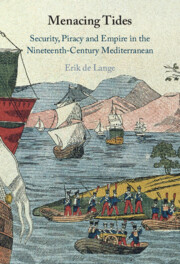3 - ‘To Give Law to the World’
Contesting Security, 1816–1824
Published online by Cambridge University Press: 11 April 2024
Summary
Security measures aimed at the repression of corsairing continued apace in the wake of 1816. ‘Barbary piracy’ remained a subject of negotiation and cooperation during the late 1810s and early 1820s. It was dealt with at ambassadorial conferences in London, during meetings of the Congress of Aix-la-Chapelle (Aachen), in combined talks with the Ottoman Porte, and through an Anglo-French expedition to the coasts of North Africa. Increasingly ambitious efforts to enact maritime security and an increasingly vocal opposition to such efforts marked the eight years following the Anglo–Dutch bombardment of 1816. The authorities of the regencies managed to thwart several European security practices, ranging from concerted communications to defensive alliances. To understand the starts, stops and reversals of the fight against Mediterranean piracy, local activity needs to be analysed. This chapter foregrounds the role of actors who were deemed piratical threats. The contestations of these threatening actors influenced the shape and success of European security practices.
Keywords
- Type
- Chapter
- Information
- Menacing TidesSecurity, Piracy and Empire in the Nineteenth-Century Mediterranean, pp. 108 - 166Publisher: Cambridge University PressPrint publication year: 2024



